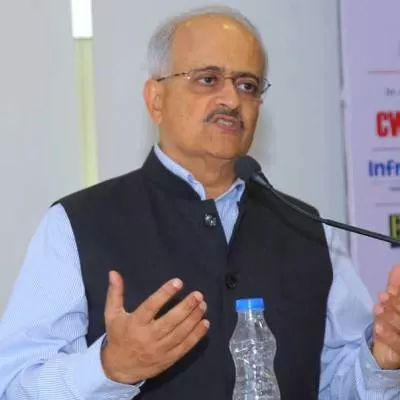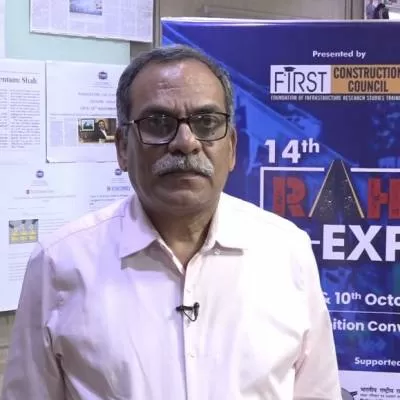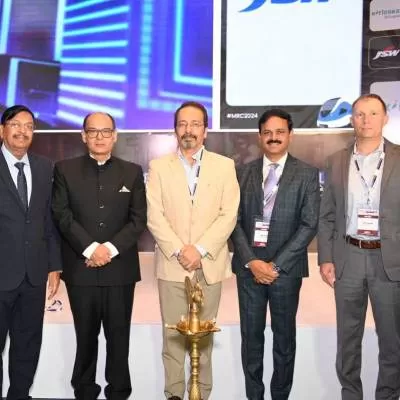- Home
- Infrastructure Urban
- ECONOMY & POLICY
- Success mantra
Success mantra
During the past 20 years, Ok Tedi Mining Ltd (OTML), a large multi-unit organisation, has expanded rapidly. In fact, it was in the process of setting up its largest modern plant in a new location. However, in recent years, and particularly at the project implementation stage of the new plant, the company had been losing managers on a regular basis. The attrition had been particularly high at the junior manager level and more so amongst recent hires. For the first time in many years, the company was slipping on its project completion schedules.
The assignment
As Synergy Consultants had been associated with the company for many years for talent acquisition, it had an inkling of the issue owing to the shorter tenures and feedback of new managers recruited in the past two years. Therefore, when the managing director informally shared his concern that "in spite of treating his people like a father and taking good care of them, their responses were not how it used to be", we knew that low employee engagement was a possible problem and we were committed to find a solution.
The basics
To plan initiatives and take steps to enhance employee engagement, we first have to understand the DNA of employee engagement and its key-drivers. There are two fundamental aspects of employee engagement:
Engagement with the organisation as a whole: This is a result of the confidence in the top leadership of the organisation and how it creates a climate of trust, respect and fairness. Engagement with the boss: This is an outcome of mutual respect and trust between the employee and his direct manager. Research has established that more employees leave an organisation owing to disconnect and disengagement with their direct manager.
Steps toward a solution
We started with a detailed interaction with the managing director to understand the current goals and direction of the company, the business strategy employed to achieve these goals, and the challenges involved. He exhibited an instinctive approach and clarity about what he wanted to do but wasn't sure if his team shared his enthusiasm and understood his concerns. This was followed by many informal discussions as well as structured interviews with members of the top management to understand their concerns and perspectives. It was important to know if they too felt that such symptoms were present and the probable reasons behind them. Also, this gave us an opportunity to assess if the top management was in sync with the vision shared by the managing director and if - and where - there was disconnect.
As the contours of the problem started becoming apparent, we decided to take two steps. First, a detailed survey was conducted amongst the entire managerial cadre. The survey covered all aspects, including their understanding of the company's business strategy, the role they play or could play in achieving it, policies of senior management, feedback and responses, etc. The survey revealed that while most managers were broadly aware about the general objectives of the company, there was a limited understanding of the business strategy and no appreciation of how it would benefit them.
It also revealed that the level of information sharing was very low. The team felt that there was no dialogue and there was a general hesitation to disagree or express a contrary opinion.
It was like a 'generation gap' and the top management felt constrained in doing things the way they really wanted to.
Second, small group discussions were held to validate the understanding and fathom the facts. Most people were unable to see how the expansion or company's general policies would help their personal growth and well-being.
Action plan
The conclusions and learning from this extensive interaction were shared with the managing director. A broad action plan to improve employee engagement with the company was discussed and agreed upon and some critical steps were undertaken. While the managing director had complete clarity about the business direction and strategy to achieve his desired goals of growth and profitability, these were never stated formally. The first step was to convince and proactively assist him in holding a formal meeting with the entire team. In this meeting, he shared his vision in depth, explained the rationale behind his business strategy, and 'invited' suggestions and comments.
As expected, the response was muted. So he again requested for ideas and called another meeting where a formal business strategy, implementation plan and timelines were agreed upon and a document subsequently drafted for complete clarity. This was the first 'shared plan' where responsibilities of all members of the top team were laid out and expectations and authorities were redefined.
The top management team replicated the same steps at the next lower level and so on till the front-line management was covered. This not only assisted in evolving a shared vision but ensured the right steps to achieve it. It also helped clarify and define the expectations and targets for all managers.
In all meetings and interactions with their teams, the senior managers emphasised that the company was moving towards evolving shared goals in a transparent fashion that would benefit employees as well as other stakeholders. Therefore, their commitment to the plan was of utmost significance. This approach was duplicated and percolated down the levels.
The senior managers took special care to appreciate and applaud all good suggestions emerging from their teams, thus conveying their openness to their ideas and feedback. To improve the engagement and commitment of new managers joining the company, a decision was taken to prepare an induction manual explaining the vision and goals of the company along with major policies, expectations, rewards and recognition practices. Also, the company started to clearly define roles, responsibilities, deliverables and authority for each new manager.
Another issue tackled was the way line managers were managing teams. A formal process of daily or weekly floor meetings was introduced for instant feedback and corrections. Listening was emphasised as a key skill for all managers, existing as well as new hires. Mentoring and training of subordinates were also included in the activities for which managers would be regularly assessed.
The results
While the process of interaction with the top management, earning their confidence and commitment and coaching took over three months, there was a dramatic improvement of employee morale once the implementation of the new approach started, and the process of healing was well on course. The improvements arising from these initiatives have not been quantified but the momentum generated has brought the focus firmly on the strategies of communication, dialogue, mutual sharing and transparency about benefits to employees, the significance of their contribution, and reward and recognition of exceptional efforts.
The company is now regularly taking steps to reach a stage where policies and goals will evolve from discussions at the lowest strata based on the organisational vision.
In conclusion
To implement the employee engagement initiative in the industry, some basic initiatives needed include giving employees freedom to take decisions and organise their work, and to make them believe that top management has a sincere interest in their well-being. One has to retain and build on the inherent concerns of employees.
Further, going forward, the leadership has to stay visible to employees and encourage free and fair communication, not shying away from contentious or uncomfortable issues. It is from the discussions and resolution of these disconnects that a new connection engaging the employees will develop.
To share your HR initiatives, write in at feedback@ASAPPmedia.com
The simple concept of 'employee engagement' can bring big rewards for a company, suggests GURDEEP S HORA. During the past 20 years, Ok Tedi Mining Ltd (OTML), a large multi-unit organisation, has expanded rapidly. In fact, it was in the process of setting up its largest modern plant in a new location. However, in recent years, and particularly at the project implementation stage of the new plant, the company had been losing managers on a regular basis. The attrition had been particularly high at the junior manager level and more so amongst recent hires. For the first time in many years, the company was slipping on its project completion schedules. The assignment As Synergy Consultants had been associated with the company for many years for talent acquisition, it had an inkling of the issue owing to the shorter tenures and feedback of new managers recruited in the past two years. Therefore, when the managing director informally shared his concern that "in spite of treating his people like a father and taking good care of them, their responses were not how it used to be", we knew that low employee engagement was a possible problem and we were committed to find a solution. The basics To plan initiatives and take steps to enhance employee engagement, we first have to understand the DNA of employee engagement and its key-drivers. There are two fundamental aspects of employee engagement: Engagement with the organisation as a whole: This is a result of the confidence in the top leadership of the organisation and how it creates a climate of trust, respect and fairness. Engagement with the boss: This is an outcome of mutual respect and trust between the employee and his direct manager. Research has established that more employees leave an organisation owing to disconnect and disengagement with their direct manager. Steps toward a solution We started with a detailed interaction with the managing director to understand the current goals and direction of the company, the business strategy employed to achieve these goals, and the challenges involved. He exhibited an instinctive approach and clarity about what he wanted to do but wasn't sure if his team shared his enthusiasm and understood his concerns. This was followed by many informal discussions as well as structured interviews with members of the top management to understand their concerns and perspectives. It was important to know if they too felt that such symptoms were present and the probable reasons behind them. Also, this gave us an opportunity to assess if the top management was in sync with the vision shared by the managing director and if - and where - there was disconnect. As the contours of the problem started becoming apparent, we decided to take two steps. First, a detailed survey was conducted amongst the entire managerial cadre. The survey covered all aspects, including their understanding of the company's business strategy, the role they play or could play in achieving it, policies of senior management, feedback and responses, etc. The survey revealed that while most managers were broadly aware about the general objectives of the company, there was a limited understanding of the business strategy and no appreciation of how it would benefit them. It also revealed that the level of information sharing was very low. The team felt that there was no dialogue and there was a general hesitation to disagree or express a contrary opinion. It was like a 'generation gap' and the top management felt constrained in doing things the way they really wanted to. Second, small group discussions were held to validate the understanding and fathom the facts. Most people were unable to see how the expansion or company's general policies would help their personal growth and well-being. Action plan The conclusions and learning from this extensive interaction were shared with the managing director. A broad action plan to improve employee engagement with the company was discussed and agreed upon and some critical steps were undertaken. While the managing director had complete clarity about the business direction and strategy to achieve his desired goals of growth and profitability, these were never stated formally. The first step was to convince and proactively assist him in holding a formal meeting with the entire team. In this meeting, he shared his vision in depth, explained the rationale behind his business strategy, and 'invited' suggestions and comments. As expected, the response was muted. So he again requested for ideas and called another meeting where a formal business strategy, implementation plan and timelines were agreed upon and a document subsequently drafted for complete clarity. This was the first 'shared plan' where responsibilities of all members of the top team were laid out and expectations and authorities were redefined. The top management team replicated the same steps at the next lower level and so on till the front-line management was covered. This not only assisted in evolving a shared vision but ensured the right steps to achieve it. It also helped clarify and define the expectations and targets for all managers. In all meetings and interactions with their teams, the senior managers emphasised that the company was moving towards evolving shared goals in a transparent fashion that would benefit employees as well as other stakeholders. Therefore, their commitment to the plan was of utmost significance. This approach was duplicated and percolated down the levels. The senior managers took special care to appreciate and applaud all good suggestions emerging from their teams, thus conveying their openness to their ideas and feedback. To improve the engagement and commitment of new managers joining the company, a decision was taken to prepare an induction manual explaining the vision and goals of the company along with major policies, expectations, rewards and recognition practices. Also, the company started to clearly define roles, responsibilities, deliverables and authority for each new manager. Another issue tackled was the way line managers were managing teams. A formal process of daily or weekly floor meetings was introduced for instant feedback and corrections. Listening was emphasised as a key skill for all managers, existing as well as new hires. Mentoring and training of subordinates were also included in the activities for which managers would be regularly assessed. The results While the process of interaction with the top management, earning their confidence and commitment and coaching took over three months, there was a dramatic improvement of employee morale once the implementation of the new approach started, and the process of healing was well on course. The improvements arising from these initiatives have not been quantified but the momentum generated has brought the focus firmly on the strategies of communication, dialogue, mutual sharing and transparency about benefits to employees, the significance of their contribution, and reward and recognition of exceptional efforts. The company is now regularly taking steps to reach a stage where policies and goals will evolve from discussions at the lowest strata based on the organisational vision. In conclusion To implement the employee engagement initiative in the industry, some basic initiatives needed include giving employees freedom to take decisions and organise their work, and to make them believe that top management has a sincere interest in their well-being. One has to retain and build on the inherent concerns of employees. Further, going forward, the leadership has to stay visible to employees and encourage free and fair communication, not shying away from contentious or uncomfortable issues. It is from the discussions and resolution of these disconnects that a new connection engaging the employees will develop. To share your HR initiatives, write in at feedback@ASAPPmedia.com
























